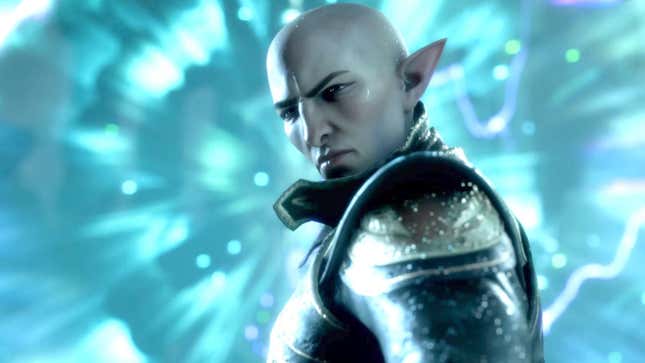When The Veilguard reaches its climax, it becomes clear that all the while, you’ve been caught in a battle of ideals between Varric’s hope and Solas’ cynicism. Rook has been a pawn (no pun intended) for Solas. The elf has been manipulating them the entire time in hopes of trapping them in the Fade and resuming his plan. He’s done this by projecting a vision of Varric who hypes Rook up until they can be cut off at the knees, falling into a state of regret so consuming it traps them within the spirit realm. Here, they’re guided by Varric through the prison until they discover the truth: Varric died at the beginning of the game, and Solas used his image to nudge Rook along the entire game.
The reveal is incredible because you realize BioWare pulled off a Sixth Sense. No one else speaks to Varric the entire game, but he’s placed naturally enough in each scene that you don’t really question that no one else responds to him. You realize that you’ve been fooled by Solas just as much as Rook has, and when they mourn their mentor’s loss, they’re effectively a stand-in for you, the Dragon Age fan. But as despondent as they might be, they still have a job to do, and Varric reminds them that they’ve done everything up to this point by themself. They don’t need Varric’s guidance. They already have everything they need.
As frustrated as I was with The Veilguard’s decision to leave the Inquisitor behind for a new protagonist, this twist was what made Rook work for me. The whole game essentially emerges from Varric betting on someone to finish the job he couldn’t. His belief in Rook is what keeps the game going, even as Solas tries to manipulate it to his own advantage. It may have been sad to watch Varric go from a city dwarf just trying to make it to a victim of Solas’ pride, but his belief in others lives on.
